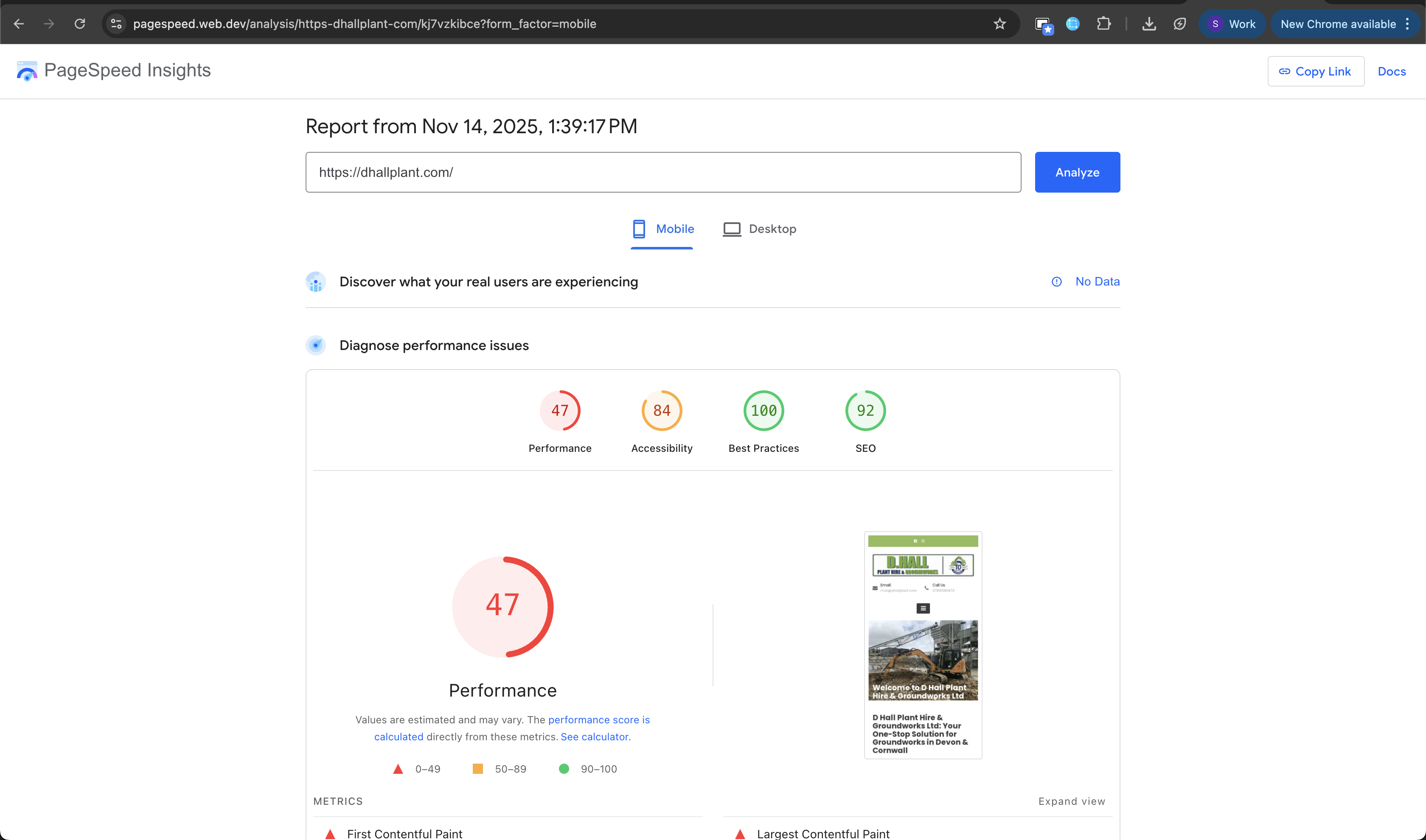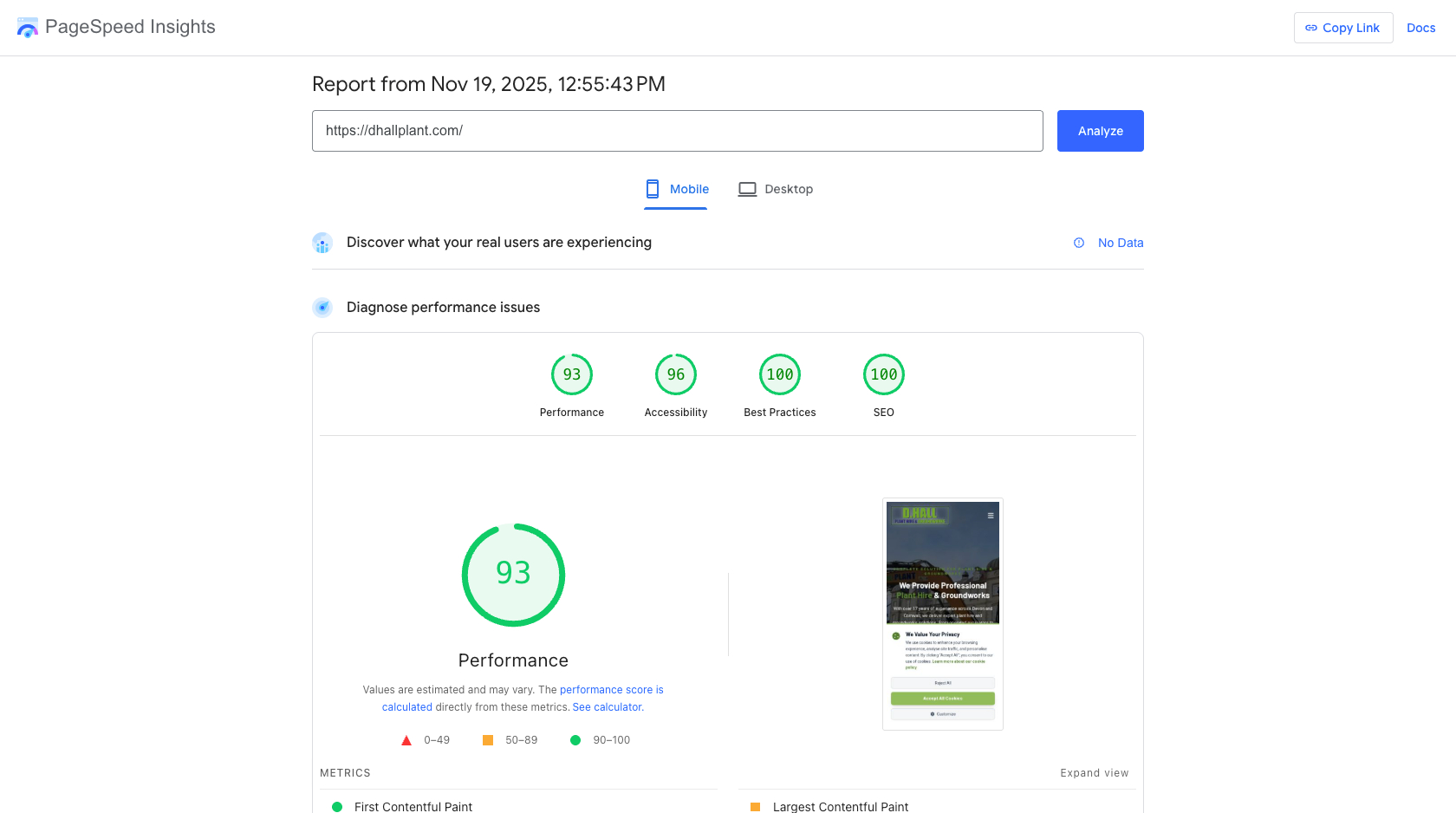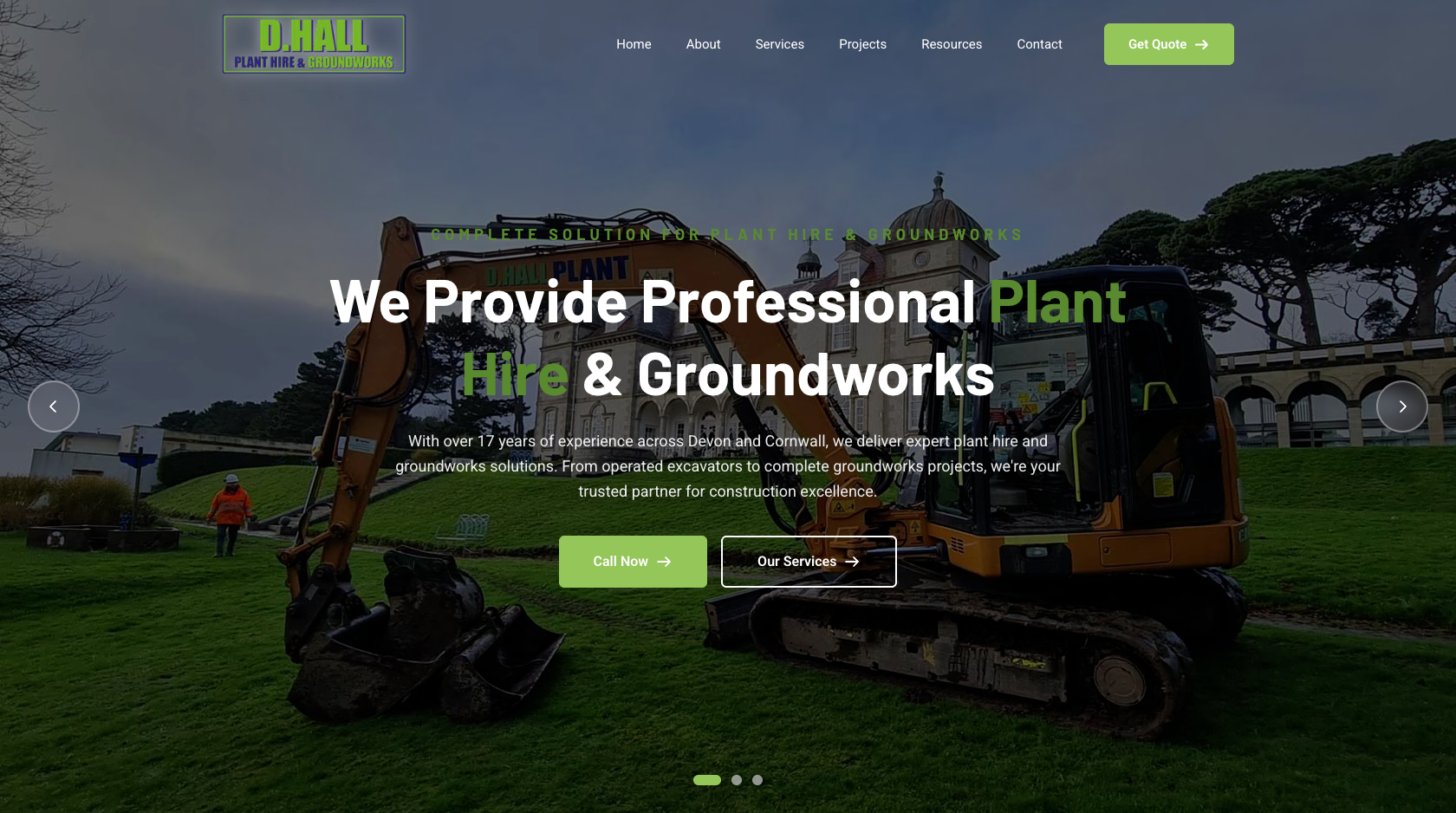
What Is Google PageSpeed and Why Does It Matter for Your Business?
Key Takeaways
- •Learn the fundamentals of web-performance
- •Discover proven strategies that deliver real ROI
- •Get actionable tips you can implement today
Let's start with a number that should concern you: 53% of mobile users abandon a website that takes more than 3 seconds to load.
That's more than half your potential customers gone before they even see what you offer. And it gets worse – Google knows this, which is why they've made page speed a direct ranking factor.
But what exactly is Google PageSpeed? And more importantly, what can you actually do about it?
What Is Google PageSpeed?
Google PageSpeed Insights is a free tool that analyses your website and scores it from 0-100 based on how fast it loads and how well it performs. Think of it as a health check for your website.
Test your website now at pagespeed.web.dev
The scoring works like this:
- 0-49 (Red): Poor - Your site needs significant work
- 50-89 (Orange): Needs improvement - Some optimisation required
- 90-100 (Green): Good - Your site is performing well
But it's not just one number. PageSpeed actually measures four key areas:
1. Performance (The Big One)
This is what most people mean when they talk about "PageSpeed score." It measures how quickly your content loads and becomes interactive. This is calculated from six metrics:
- First Contentful Paint (FCP)
- Largest Contentful Paint (LCP)
- Total Blocking Time (TBT)
- Cumulative Layout Shift (CLS)
- Speed Index
- Time to Interactive
2. Accessibility
How usable is your site for people with disabilities? This affects around 16% of the world's population and is increasingly a legal requirement.
3. Best Practices
Are you following modern web development standards? Using HTTPS? Avoiding deprecated code?
4. SEO
Basic SEO health checks – meta tags, crawlability, mobile-friendliness.
Why PageSpeed Actually Matters
"So what if my site takes a few seconds to load?"
Here's why you should care:
1. It Directly Affects Your Google Rankings
Since 2018 on mobile and 2021 with Core Web Vitals, page speed is a confirmed Google ranking factor. If two sites have similar content but one loads faster, the faster one wins.
Google's logic is simple: they want to send users to sites that provide a good experience. Slow sites don't.
2. Every Second Costs You Money
The data is brutal:
- 1 second delay = 7% reduction in conversions
- 2 second delay = bounce rate increases by 32%
- 3 second delay = 53% of visitors leave
- 5 second delay = bounce rate increases by 90%
For an e-commerce site doing £100k/year, a 1-second improvement could mean an extra £7,000. A 3-second improvement? That could be £15-20k.
3. Mobile Users Have Zero Patience
Over 60% of web traffic is now mobile. Mobile users are often on slower connections, yet have even less patience than desktop users. If your site is slow on mobile, you're invisible to most of your market.
4. It Affects Your Ad Costs
Running Google Ads? Your landing page speed affects your Quality Score, which affects how much you pay per click. Slow pages = higher ad costs + lower positions.
A Real-World Case Study: D Hall Plant Hire
Let's look at what a difference modern web development makes with a real example.
D Hall Plant Hire & Groundworks came to us with a WordPress website that had been built by a traditional agency. It looked acceptable, but under the hood it was struggling.
Before: The WordPress Site
 The old WordPress site: Performance score of 47 on mobile
The old WordPress site: Performance score of 47 on mobile
The Numbers:
- Performance: 47 (Red - Poor)
- Accessibility: 84 (Orange - Needs work)
- Best Practices: 100 (Green)
- SEO: 92 (Green)
The site had classic WordPress problems:
- Multiple plugins adding bloat
- Unoptimised images
- Render-blocking resources
- Slow server response times
- Heavy theme with unused code
For a plant hire company where most enquiries come from mobile users on job sites, this was costing them serious business.
After: The Next.js Rebuild
 The new Next.js site: Performance score of 93 on mobile
The new Next.js site: Performance score of 93 on mobile
 The new D Hall Plant Hire homepage - fast, modern, and mobile-optimised
The new D Hall Plant Hire homepage - fast, modern, and mobile-optimised
The Numbers:
- Performance: 93 (Green - Good)
- Accessibility: 96 (Green - Good)
- Best Practices: 100 (Green)
- SEO: 100 (Green)
That's a 46-point improvement in performance – nearly doubling the score.
What Changed?
The new site was built with:
- Next.js: Modern React framework with built-in optimisations
- Image optimisation: Automatic WebP conversion, lazy loading, proper sizing
- Clean code: No plugin bloat, just what's needed
- Server-side rendering: Pages are pre-built, not assembled on each visit
- Edge deployment: Served from CDN locations close to users
The result? A site that loads in under 1 second instead of 3-4 seconds. That's the difference between keeping visitors and losing them.
Why Most WordPress Sites Score Poorly
We're not here to bash WordPress – it powered the web for years. But there's a reason most WordPress sites struggle with PageSpeed:
The Plugin Problem
The average WordPress site has 20-30 active plugins. Each plugin:
- Adds its own CSS and JavaScript
- Makes database queries
- Can conflict with other plugins
- May not be optimised for performance
Need contact forms? Plugin. SEO? Plugin. Security? Multiple plugins. Before you know it, your site is loading megabytes of code for features you don't use.
The Theme Tax
Most WordPress themes are designed to be "flexible" – meaning they include code for hundreds of features you'll never use. That code still loads on every page.
Server-Side Rendering on Every Request
WordPress builds each page fresh when someone visits. It queries the database, runs PHP, assembles the HTML, then sends it to the browser. Every. Single. Time.
Modern frameworks like Next.js build pages once and serve them instantly from a CDN.
How to Improve Your PageSpeed Score
The Quick Wins
- Optimise images - Use WebP format, compress them, size them correctly
- Enable browser caching - Let visitors store files locally
- Minimise CSS/JavaScript - Remove unused code
- Use a CDN - Serve files from locations close to users
- Upgrade hosting - Cheap shared hosting = slow site
The Real Solution
Here's the uncomfortable truth: you can optimise a WordPress site and get it from 30 to 50, or maybe even 50 to 70. But getting into the 90s consistently? That usually requires a rebuild with modern technology.
Why? Because the fundamental architecture of WordPress creates overhead that no amount of optimisation can fully eliminate.
Modern frameworks like Next.js are built from the ground up for performance. They don't need plugins for basic features. They don't query databases on every page load. They're designed for the modern web.
What Score Should You Aim For?
The Minimum
At absolute minimum, you want:
- Performance: 50+ on mobile
- Performance: 70+ on desktop
Below this, you're actively hurting your business.
The Target
For competitive industries:
- Performance: 70+ on mobile
- Performance: 85+ on desktop
The Goal
What we deliver at Pink Frog Studio:
- Performance: 90+ on both mobile and desktop
- Accessibility: 90+
- Best Practices: 100
- SEO: 100
This isn't a target – it's our guarantee. Every site we build scores 90+ on Google PageSpeed.
How to Check Your Current Score
- Go to pagespeed.web.dev
- Enter your website URL
- Wait for the analysis (takes about 30 seconds)
- Check both Mobile and Desktop scores
- Scroll down to see specific issues
Pro tip: Test your competitors too. If they're scoring 80+ and you're at 40, guess who Google prefers?
The Cost of Inaction
Every day your site is slow:
- You're losing potential customers who abandon before loading
- You're ranking lower than faster competitors
- You're paying more for Google Ads with worse positions
- You're leaving money on the table
A 3-second site in 2025 is like having a shop with a jammed door. Some people will force their way in, but most will just go next door.
Ready to Fix Your Speed Problem?
If your PageSpeed score is giving you anxiety, you have two options:
Option 1: Optimise what you have
- Compress images
- Remove unused plugins
- Improve hosting
- Hope for a 10-20 point improvement
Option 2: Build it right
- Modern Next.js architecture
- Performance built in from day one
- 90+ scores guaranteed
- A site that actually helps your business grow
We've taken sites from 30 to 95. From 47 to 93. From "embarrassingly slow" to "faster than 95% of websites on the internet."
Want to see what a 90+ PageSpeed score looks like for your business? Get in touch – we'll show you exactly what's slowing your site down and what it would take to fix it properly.
P.S. Go test your site right now at pagespeed.web.dev. If that number makes you wince, let's talk.
Ready to Grow Your Business?
Get a free Google Ads audit and discover untapped opportunities to increase your ROI.
Get Your Free Report →Written by Pink Frog Studio
Digital Marketing Specialist
With over 5 years of experience in digital marketing, Pink helps UK businesses unlock their online potential through data-driven strategies and proven tactics that deliver measurable results.
Continue Learning
Explore more insights to grow your business

Why Your Exeter Business Is Invisible Online (And How to Dominate Local Search)
Your competition is stealing your customers while you're invisible on Google. Here's the brutal truth about local SEO in Exeter and how to claim your rightful spot at the top.

The £50,000 PPC Mistake Most UK Businesses Make (And How We Fixed It)
We audited a client spending £50k on Google Ads with barely any return. The problem? They were doing everything 'right' according to Google. Here's what actually works.

Why We Ditched WordPress for Next.js (And Your Business Should Too)
WordPress powers 40% of the web. It's also holding 40% of businesses back. Discover why modern frameworks are leaving WordPress in the digital dust.
Get Tips That Actually Work
Join 500+ UK business owners getting actionable digital marketing insights every Friday.
No spam. Unsubscribe anytime.
Ready to Grow Your Business?
Let's have a quick chat about how we can help you get more customers.